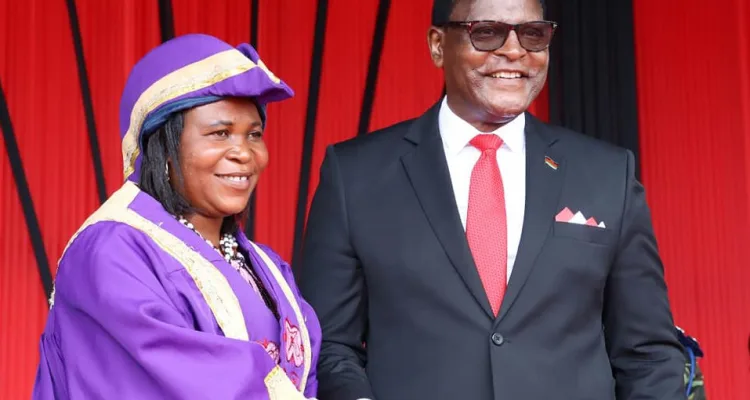
There is a protracted battle between government on one side ‘several Lhomwe chiefs’ on the other side and the Mulhakho Wa Lhomwe board chairperson in the middle over the installation of Senior Chief Kaduya as the new Paramount Chief of the Lhomwes in the country.
Just a day after the installation, a collection of not-so-happy ‘several Lhomwe chiefs’ gathered in Thyolo to express their discontent with Kaduya’s installation, arguing that they do not acknowledge her authority due to her Mang’anja heritage.
Government, on its part, says Mulhakho wa Alhomwe Heritage Foundation is better placed to explain the reasons it selected Senior Chief Kaduya, whom President Lazarus Chakwera approved and installed as a Lhomwe Paramount chief on Thursday.
In the middle of it all, is the Mulhakho wa Alhomwe board chairperson, Mutchanakhwayi Mpuluka, who thinks there is a hand that is trying to divide the clan, revealing that most of the disgruntled chiefs attended a chiefs’ meeting a week ago where they supported the Kaduya decision.
So who, really, is fooling who here?
To understand the Lhomwe chieftaincy, you need to delve a bit into the history of the people we call ‘Lhomwes’ today.
The people we call Lhomwes today are part of the various ethnic groups that migrated from Mozambique between 1890s to 1940 under the banner of Nguru migrations. They were not a common ethnic group—among others you had the Lhomwes, the Ngurus [who were in majority], the Metho, the Amehiwa, the Amihovani and several others.
They came in different stages and collectively they mostly referred to as Ngurus because the Ngurus were in majority. But there was a negative brand that the Nguru name had as they were disdained as snake eaters. To protect the image of the people, government in 1953 termed all the groupings under the Nguru migrations as Lhomwes. To mean, the second largest group of the Nguru migrants came to represent all of them. Just like that they were all Lhomwes.
Now the question, today, of who is a real Lhomwe—after years of intermarriages with the Mang’anja whom they found in Malawi—was as problematic then as it is now. That is why it took time for Lhomwes to have a paramount chief because, unlike the Ngonis with a common heritage, they are not a people with a shared history.
They began to have a paramount chief very recently, thanks to President Bingu Wa Mutharika who, himself a Lhomwe, saw a united tribe under one paramount chief would not just strengthen the tribe but also be a big political bloc.
That is why the question of who should be the next paramount chief is left to the Lhomwes themselves through their own chosen Mulhakho Wa Alhomwe Foundation.
But in the face where the foundation is saying something and several other chiefs are pushing the contrary, what does that mean?
It’s all politics.
In fact, you don’t need to doubt Mpuluka when he says there is a hand which wants to split the Lhomwe tribe.
Well, the context is there for all to see. The Lhomwe belt is a bedroom for the opposition DPP. Having an MCP President installing a paramount chief of a fluid and divided tribe, affiliated to DPP, is only a cause for some to exert their influence.
In the end of it all, DPP and Mulhakho Wa Alhomwe Cultural Heritage need to ensure these divisions are handled intelligently—that they don’t provoke their historical differences.
Otherwise, we surely know who is fooling who here.













